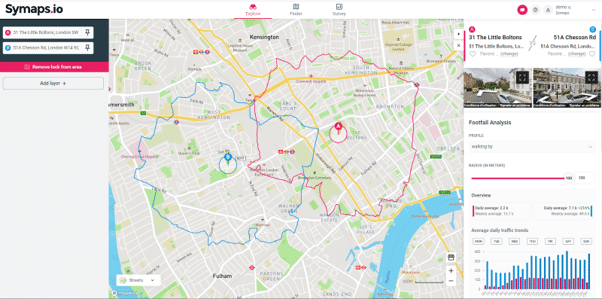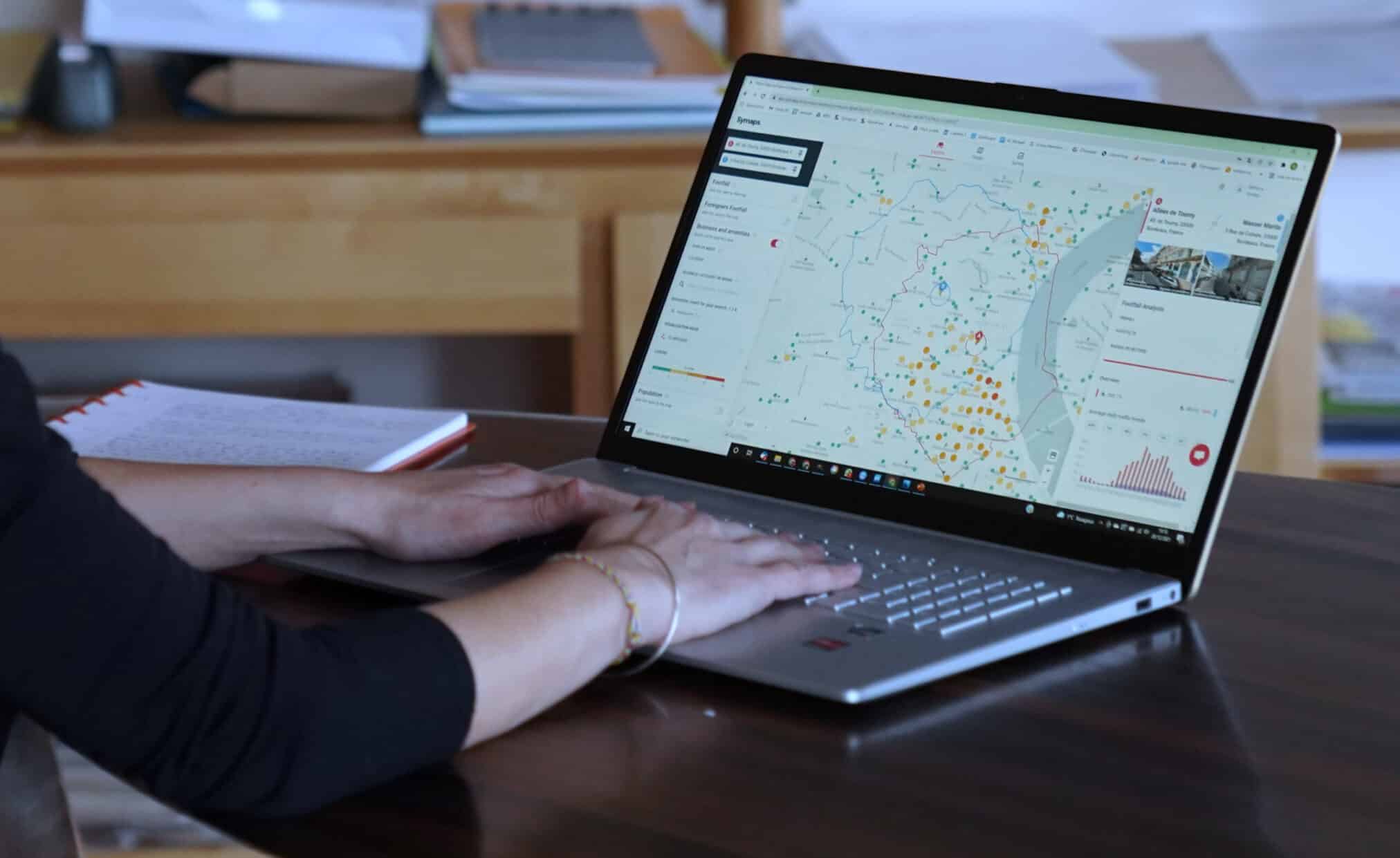Catchment area, the keys to analysing it properly
You may call it catchment area, influence area or even isochrone,… the concept lying behind is at the heart of a successful location.
You’ll find here all you need to know about catchment areas and more important about what to look at to choose a good location. Enjoy your reading!
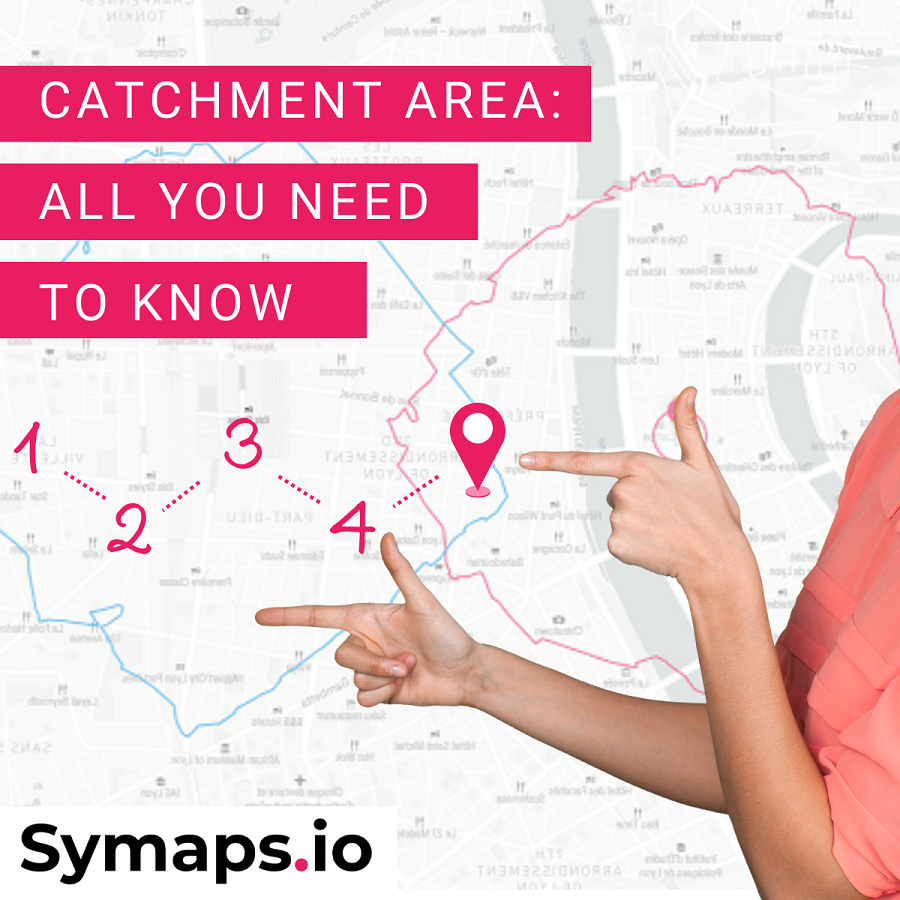
1. Catchment area definition
The catchment area for a point of sale is the geographical area from which the majority of its customers or potential customers come.
It is represented on a map in the form of concentric zones drawn around an address.
The catchment area can be calculated in different ways:
– Isochronous catchment area: measures the time it takes to reach an address by foot, bike or car
– Isometric catchment area: measures the distance around an address
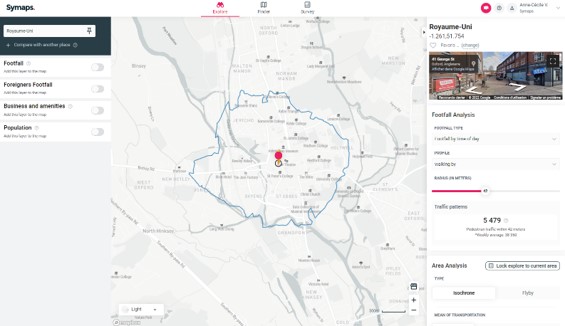
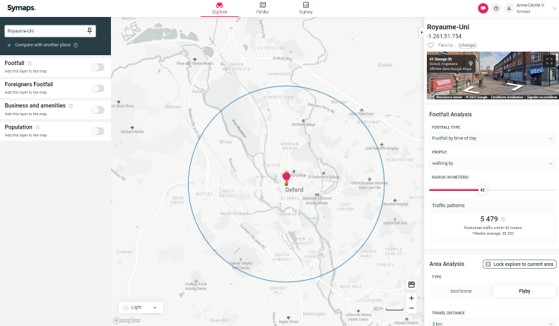
Depending on the degree of proximity around an address, we speak of a primary, secondary or tertiary catchment area.
The primary catchment area is the closest area around the point of sale. For example: 5 min walk / bike / car.
The tertiary catchment area is the furthest area around the point of sale. For example: 15 min walk / bike / car.
And the secondary catchment area logically corresponds to the intermediate zone. For example: 10 min walk / bike / car.
2. What is the purpose of a catchment area study?
Choose the right location
Selecting the right location is crucial for businesses that rely on foot traffic, and analyzing the catchment area is a critical step in the process. As mentioned earlier, the catchment area is the geographic region from which a business is expected to attract customers, and studying this area can provide valuable insights into the potential customer base’s demographic profile, purchasing behavior, and spending power.
By analyzing the catchment area, businesses can also identify potential competitors and determine the level of demand for their products or services in the area. This information can inform important decisions about pricing, inventory, and product mix, which are essential components of a business plan.
The criteria for selecting a location will vary depending on the nature of the business. For example, a nursery would not be located in an area with few families, and a fast-food restaurant would target regions where its typical customer base is present. Through a comprehensive analysis of the catchment area, businesses can determine the optimal location that is most likely to attract their target audience and meet their business objectives.
Check how to estimate market potential to effectively assess the viability of a new location.
Get all catchment area data on Symaps location intelligence platform!
Evaluate your potential turnover for your business plan
The analysis of the catchment area is an essential step in building a robust and comprehensive business plan.
Using the data collected from the catchment area study, you can make more accurate revenue projections, which will be a crucial component of your financial plan.
With a clear understanding of the size of the market, the competition, and the consumer demand in the area, you can create a realistic sales forecast that will help you determine the financial viability of your business. This forecast can be used to project your expected revenue and expenses over a specific period, usually three to five years, which will help you determine how much capital you will need to get your business up and running.
Most commonly used data are:
– the number of potential customers
– the demographic profile of the nearby population (age, occupation, income, family status,…)
– foot traffic by walking or by car
– the presence of other nearby shops and competitors.
Additionally, the catchment area data can help you identify the key drivers of your business, such as the target audience, or the competitive advantage. Armed with this information, you can create a marketing strategy that is targeted to your ideal customer, and develop a pricing strategy that reflects the competition and the value your business brings to the local market.
Adapt your sales strategy and marketing actions
Knowing one’s catchment area and area of influence also allows one to better anticipate and adapt one’s marketing and sales strategy.
Thus, the pedestrian and car traffic data make it possible to determine the number of people visiting a particular area by relevant time slots and filtering by days of the week.
The number of visitors provides useful information for setting up relevant commercial action during certain time slots or for adapting opening hours, for example.
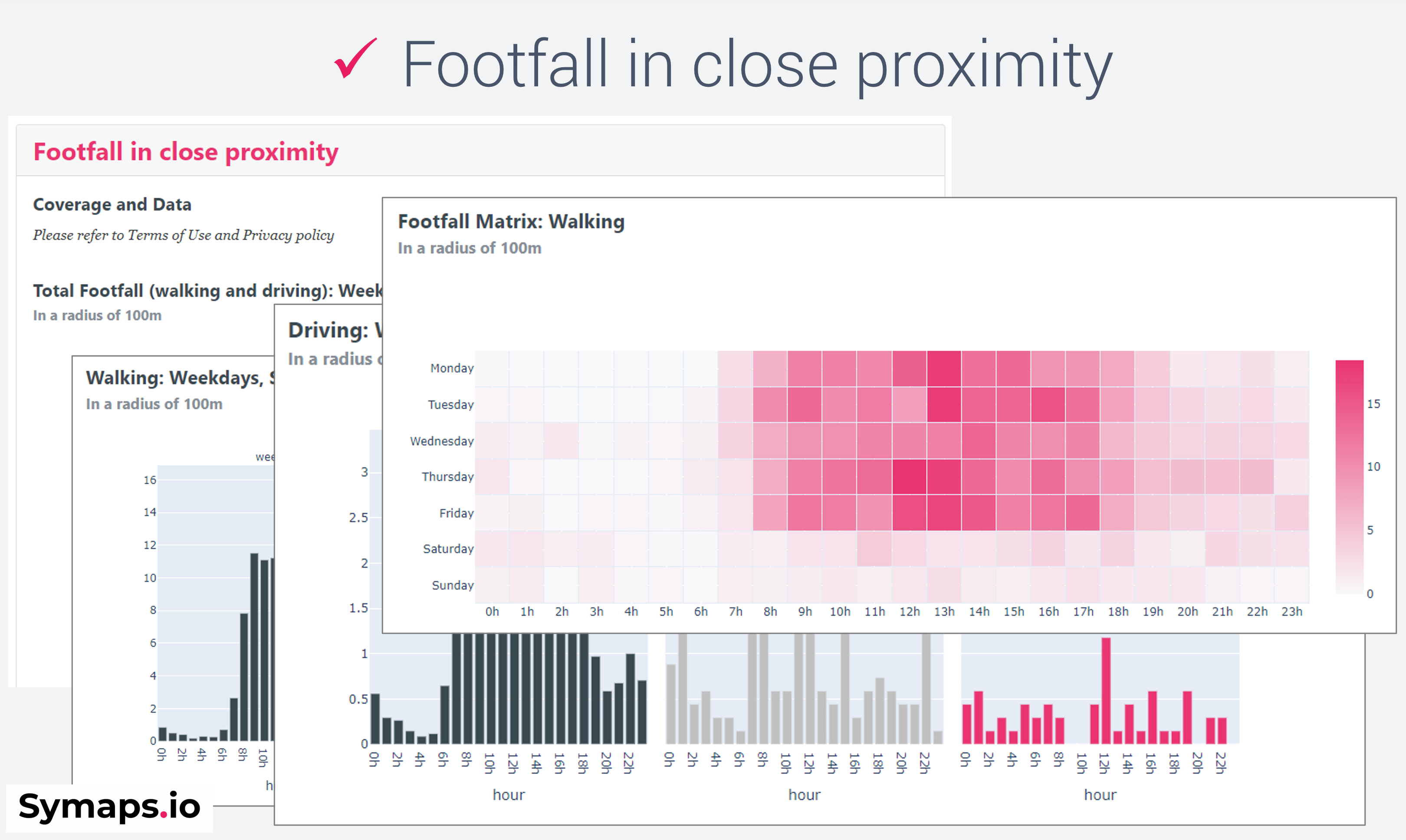
Optimise your network
For brands with several points of sale, the study of their different catchment areas also makes it possible to optimise their coverage by identifying potential overlapping areas or grey areas, but also by identifying areas with the highest potential. Learn more
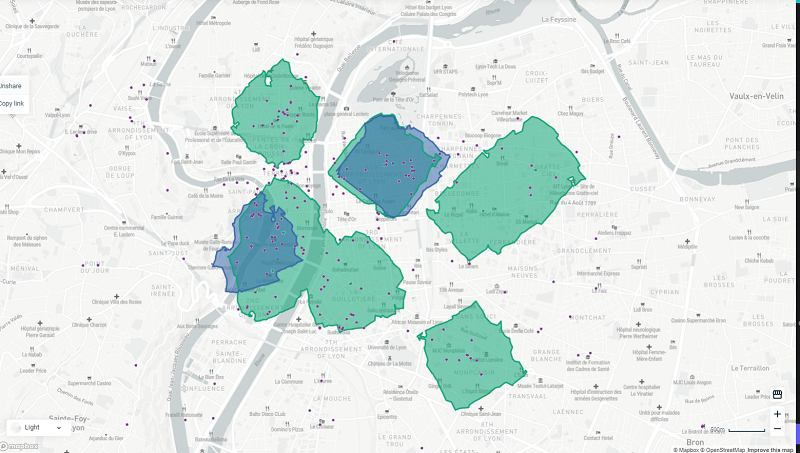
Good to know: the special case of franchises
When opening a franchise, the franchisor typically needs to provide a local market report to the prospective franchisee.
In France, according to the “Doubin Law” (Article L330-3 of the Commercial Code), a franchisor must provide its franchisees with “a presentation of the general and local state of the market for the products or services to be covered by the contract and the prospects for the development of this market.
This document, which is part of the pre-contractual information document (DIP), must therefore provide the necessary information on the market around an address. The study of the catchment area is part of the local market report.
Analyse your local market and identify areas for expansion with Symaps geomarketing platform!
Symaps is a geomarketing application designed for businesses who are seeking the best locations and strategic insights for their physical expansion.
3. How to calculate your catchment area?
Isometric catchment areas
The isometric catchment area is calculated on the basis of a distance around a given address.
It is represented by one or more concentric circles.
Isochronous catchment areas: the one you want to monitor

The isochronous catchment area is calculated according to the time needed to reach a certain address depending on the means of transport used.
The catchment area differs for pedestrians, car drivers or cyclists.
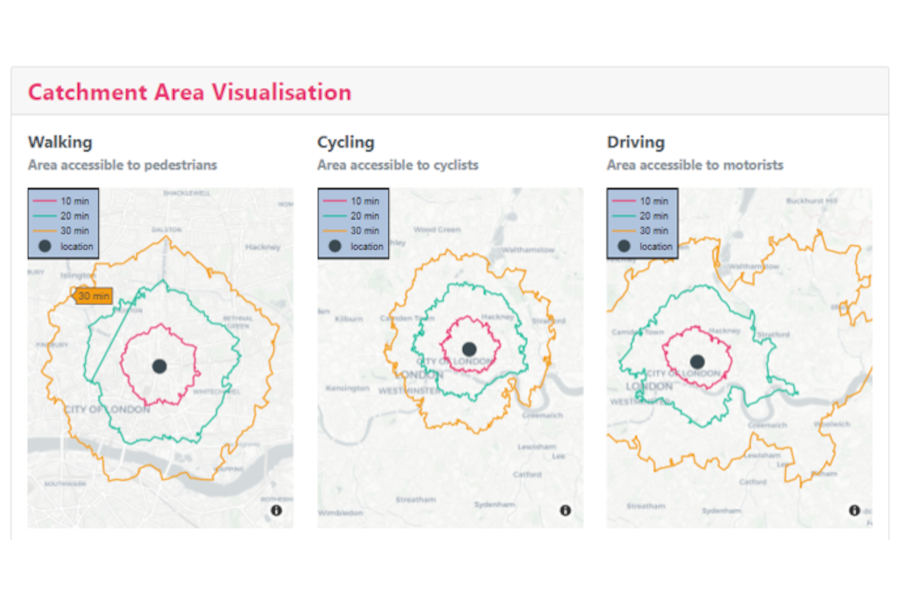
Why is it not enough to only visualize your catchment area?
To carry out a location study, the first step is to visualize the different catchment areas on a map. This visualization allows you to see at a glance the extent of the area of influence around an address.
But the visualization of the catchment area on the map is only the starting point of the analysis. Once the catchment areas have been defined, it is necessary to go into more detail to identify the potential of a location.
What data should you check?
The study of your catchment area should include three types of data : socio-demographics, footfall and businesses and amenities in the zone.
-
1. The population living in the vicinity
How many people? What type of households are there? What is the profile of the population? What profession are people in?
-
2. How often is the area frequented?
Which time periods are most busy?
-
3. The type of shops and facilities in the vicinity
Who are your direct and indirect competitors and how are they located? What are the other companies present on the market? What are the facilities nearby?
Footfall : the key dimension of the catchment area analysis
Data on the population and the competitive environment only provide a static picture of the catchment area.
However, this information is still not enough. Depending on the target market, it is essential to take into account the number of visitors to an area in order to correctly assess the potential of a location. This is why footfall is so important in retail.
Let’s take an example:
You have identified two potential locations but:
– The first is in a business area that at first glance seems interesting: the population in the vicinity corresponds to the profile of your clientele, the address is well connected and there are few of your direct competitors nearby.
– The second is an area that does not meet these criteria to a much lesser extent: a smaller population and more competition nearby
Is it easy to choose the location of your future sales outlet between these two areas? Not necessarily.
Everything will depend on the number of people frequenting the area.
The area around the first location is attractive at first glance, but turns out to be little busy during the day, unlike the second location.
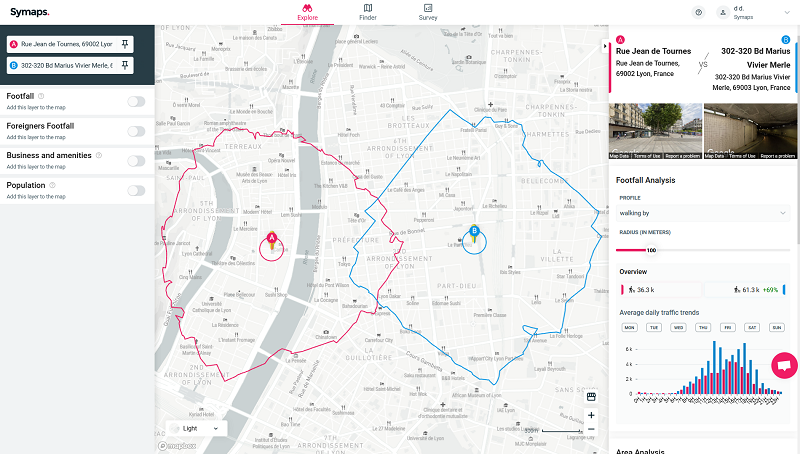
Further information: expansion strategy and brand development
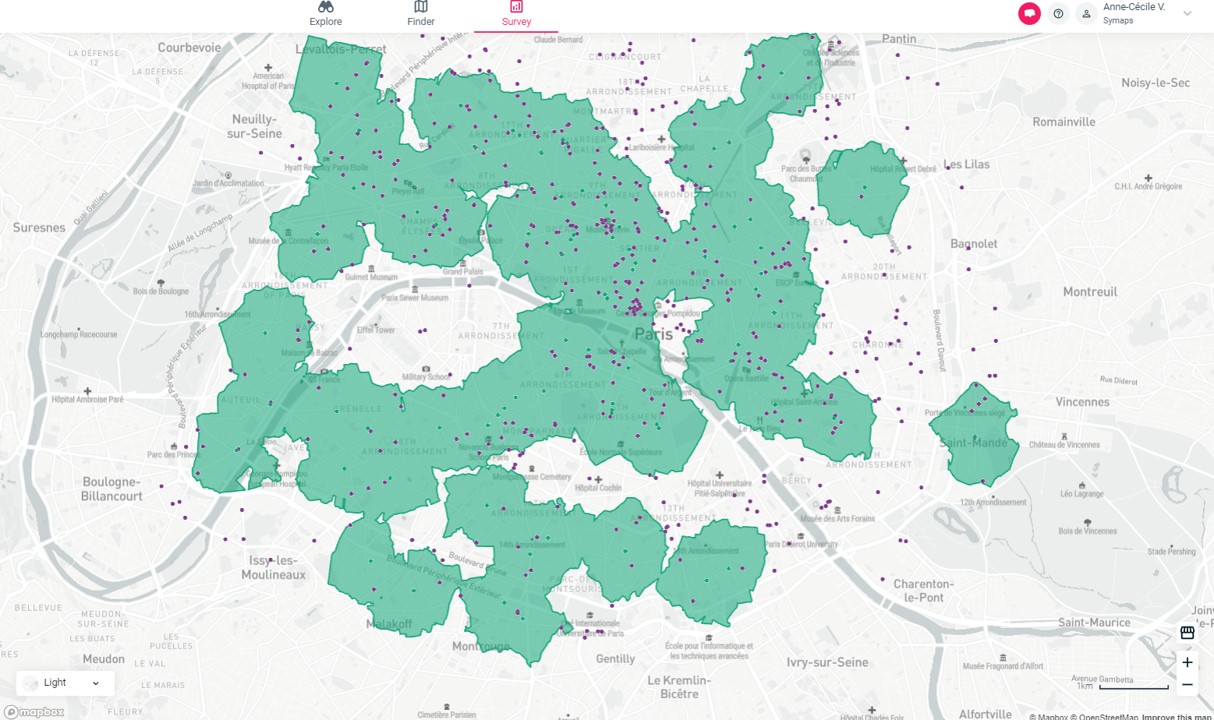

Conclusion in 3 questions
Question 1 - What is a catchment area?
The catchment area of an address is the geographical area from which the majority of customers come. The isochronous catchment area, the most commonly used, is represented on a map by concentric zones and depends on the travel time (on foot, by car or by bicycle).
It is also sometimes referred to as the area of influence.
Knowing your catchment area allows you to measure the potential of a location and gives you assumptions to build your future revenue projections.
Question 2 - Catchment area, the keys to analysing it properly
The study of the catchment area is an essential step before opening a business, especially when choosing a business location.
The information needed to understand the catchment area includes the population in the vicinity, the competitive environment and the facilities in the area, but also the number of visitors of the area and customer flows.
The intersection between these different types of data allows for a precise knowledge of the local market. The importance given to each criterion is strongly correlated to the type of project envisaged.
Question 3 - How do you compare different catchment areas to find THE right location?
There are two ways to go about identifying a high value business location.
If you already have a good comprehension of the local market, and you have already identified one or more premises, all you have to do is compare the data on the two addresses. Depending on the project you are considering (opening a fast-food restaurant, a grocery shop, a bookshop, etc.), comparing the most important criteria will enable you to make an informed choice.
Conversely, you may have identified the characteristics of the area you are looking for (young population, high weekend traffic, close to a cinema for example), but you do not know what area to start with. In this case, using a tool such as Symaps can help you identify the most relevant areas according to your criteria in a few clicks, and then compare them. All on the same interface. Learn more
Streamline Your Location Finding Efforts
Site selection – Strategic planning – Coverage analysis – Network optimisation – Expansion simulations – Local market research
Get started today with a free demo and see first-hand how Symaps geomarketing solution can help!
Share post
